











Dear Esteemed Patrons and Devotees of Music,
It’s not merely the notes that create a melody but the passion and dedication behind each one. As the Artistic Director of the International Center for Music, my journey in music has been deeply personal and profoundly enriching. The same fervor that drove me to delve into the depths of musical discipline drives our students, faculty, and guests artists. Their commitment to their craft is not only a source of endless inspiration but also what sets our program apart.
Kansas City is truly privileged, as within its bounds lies an audience with an appetite for genuine talent and a heart that beats in rhythm with the finest melodies. Our concert series provides an invaluable opportunity to experience this prodigious talent in an accessible manner, making world-class music available to all.
Our mission at the International Center for Music at Park University has always been clear – to offer an environment reminiscent of the intensive training I was fortunate to undergo, a space free from distractions where the sole focus is on achieving musical excellence without the burden of financial pressures.
In addition to our homegrown prodigies, the ICM Concert Series is also graced by legendary guest performers, individuals whose contributions to the world of music have been monumental.
As we usher in another season of musical brilliance, I warmly invite you to be a part of our melodious journey. Come, immerse yourself in a world where past, present, and future converge in harmonious symphony.
With profound gratitude,
 Stanislav Ioudenitch Founder and Artistic Director International Center for Music at Park University
Stanislav Ioudenitch Founder and Artistic Director International Center for Music at Park University
P.S. Each performance is a manifestation of our shared love for music. Your presence and applause amplify our drive to elevate the art form further.
Violin Sonata in A major, BWV 1015 .............................................
Johann Sebastian Bach (1685-1750)
Lolita Lisovskaya-Sayevich, piano
Sonata No. 1 in A major, Op. 13
Gabriel Fauré (1845-1924)
Lolita Lisovskaya-Sayevich, piano
Romantic Pieces op. 75 for Piano and Violin
Antonín Dvořák (1841-1904)
Lolita Lisovskaya-Sayevich, piano

Born in Tel Aviv, Israel, Shmuel Ashkenasi attended the Musical Academy of Tel Aviv and gave his first public performance at the age of eight. After studying with Ilona Feher, he came to the United States to study with Efrem Zimbalist at the Curtis Institute of Music.
He won the Merriweather Post Competition, was a finalist in Belgium’s Queen Elisabeth competition, and received second prize in the International Tchaikovsky Competition in Moscow. In 1969, he formed the famed Vermeer Quartet and remained its first violinist throughout the quartet’s 39-year career, gaining a reputation as one of the world’s outstanding chamber musicians.
Mr. Ashkenasi has toured the former Soviet Union twice and concertized extensively in Europe, Israel, the Far East, and the United States; and he has collaborated with Rudolf Serkin, Thomas Hampson, Murray Perahia, Peter Serkin, and Menahem Pressler. He has performed as soloist with many leading orchestras, including those of New York, Boston, Philadelphia, Chicago, Los Angeles, Berlin, London, Moscow, and Tokyo.
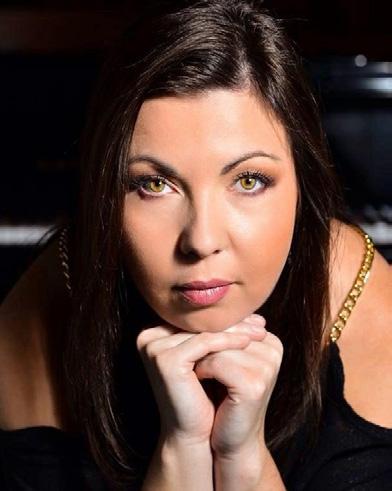
Born into a Tashkent (Uzbekistan) musical family, Lolita Lisovskaya-Sayevich began studying piano at the age of 4. In 1985, she entered the Uspensky Central Music School in Tashkent. In 1993, she started attending a private school for young musicians in Moscow, and that same year received the first prize at the Chopin International Piano Competition in Göttingen, Germany. She entered the Tchaikovsky Special Music School in 1995, and two years later was accepted to the Tchaikovsky Moscow Conservatory under the tutelage of Vera Gornostaeva, with whom she continued postgraduate study from 2002 to 2004. Lisovskaya-Sayevich also studied with Stanislav Ioudenitch at Park University.
In 1996, Lisovskaya-Sayevich received the first prize from the Nikolai Rubinstein International Piano Competition, and in 2007 the first prize at the Iowa International Piano Competition. She was awarded scholarships from the Rostropovich Foundation, the Spivakov Foundation and the Nikolai Petrov Foundation. She has also earned the laureate designation from the international program “New Names,” and the festival “Virtuoso 2000” in St. Petersburg, Russia. Lisovskaya-Sayevich has recorded at the Hessen Radio Station in Frankfurt, Germany, and at Orfei Radio in Moscow.
Lisovskaya-Sayevich has presented numerous solo recitals and has played as a soloist with orchestras in Austria, France, Japan, Spain, Germany, Hungary, Italy and Russia. She has participated in many music festivals, including the Bashmet Festival in Tours, France, “Wave 2000” in Japan, International Musical Arts Institute in Maine (USA), Killington Music Festival in Vermont (USA), “Ars Longa” and “Primavera Classica” in Moscow. She collaborated with such renowned musicians as Daniel Muller-Shott, Shmuel Ashkenazy, members of the Boston Symphony Orchestra and many others. She now performs extensively in chamber music ensembles.
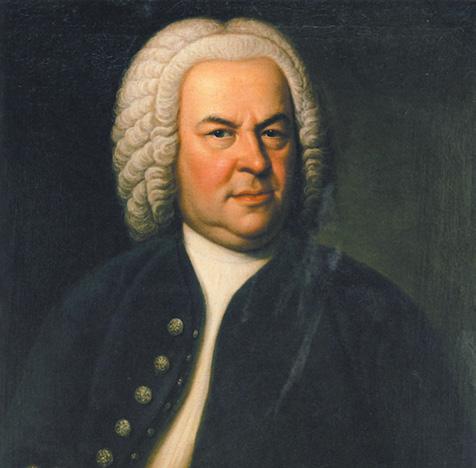
Bach did not invent the sonata for violin and obbligato keyboard, but he made such a strong case for it that, by the latter part of the 18th century, composers such as Haydn and Mozart regarded it a standard chamber-music genre. In his dozen or so sonatas for harpsichord paired with solo violin, flute, or viola da gamba, Bach had highlighted the effectiveness of full-bodied keyboard parts that served both harmonic and melodic functions. And what keyboard writing! These sonatas stand today as some of the most brilliant chamber works of all time, favored by violinists and keyboardists alike.
The “solo sonata” of the earlier Baroque was more akin to song or aria, with a soloist accompanied by an improvised, largely supportive “figured bass” part. What Bach forged in these six sonatas, BWV 1014-1019 — guided by his own muse and by some earlier composer’s examples — was a riff off the Baroque “trio sonata” that also forged a clear path toward the modern sonata, with equal parts for violin and keyboard. With the word obbligato he was telling the harpsichorist: “You may still improvise, tastefully, but you are obligated to play the notes that I have written out.”
The violin sonatas were composed, for the most part, between 1717 and 1723, during Bach’s years as Kapellmeister at the court of Prince Leopold. This period of employment under an aficionado of chamber music also saw the creation of a great deal of Bach’s best-known instrumental music: the Brandenburg Concertos, the cello suites, the sonatas and partitas for solo violin, the orchestral suites, and the first book of The Well-Tempered Clavier.
The violin sonatas were not published until after Bach’s death, but they had circulated widely, in authoritative copies. The first five sonatas, including the one heard today, follow the sonata da chiesa (church sonata) format, a slow-fast-slow-
fast procedure with early roots in church music. This Sonata in A major begins with a plaintive slow movement that establishes, from the first measures, an absolute parity between violin and keyboard.
The second movement follows the fugal procedure common to these sonatas, and Bach keeps the pianist’s left hand so busy that there is no thought of “realizing” the bass line. The minor-key third movement places violin and righthand piano in strict canon throughout, already showing the thirty-something Bach as a supreme master of counterpoint. The finale returns to A major for a roller-coaster ride of non-stop energy.
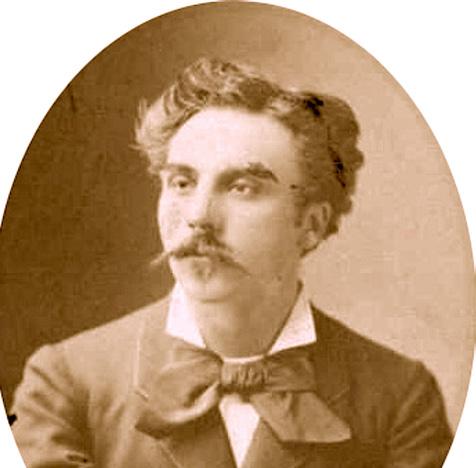
Gabriel Fauré (1845-1924): Sonata No. 1 in A major, Op. 13
Fauré was such a dashing figure in 19th-century Parisian society that he even makes an appearance in Marcel Proust’s À la recherche du temps perdu — or at least many have believed that the author’s fictional composer, Vinteuil, was modeled after him. (Proust was one of Fauré’s most avid admirers, and he would later write to the surprised musician: “I know your work well enough to write a 300-page book about it.”)
Contemporary accounts paint Fauré as an extraordinarily handsome fellow, and a bit of a ladies’ man at that. “He had a dark complexion,” wrote one observer, “a somewhat distant expression of the eyes, a soft voice and gentle manner of speech that retained the rolled provincial ‘r’, and a simple and charming bearing.”
Fauré began life a young musical prodigy: Camille Saint-Saëns taught him piano and introduced him to the music of Liszt and Wagner. Fauré went on to earn a modest living as a church organist, though he did, finally, step into the prestigious post of director of the Paris Conservatory.
Among his works are two operas and numerous choral and orchestral works, but it is his outpouring of piano-centric chamber music and French chansons
Gabriel Fauré in1875(more than 100) that constitute Fauré’s most significant contribution to music.
When Saint-Saëns introduced Fauré to the great mezzo-soprano Pauline Viardot in 1872, the younger composer was drawn to the singer’s household with its lively salon life. Fauré dedicated a number of songs to Viardot, but it was the mezzo-soprano’s daughter, Marianne, who captured his heart utterly.
Alas, she broke off their engagement after three months; meanwhile the lovestruck Fauré had written one of the most beautiful violin sonatas of the era, which he dedicated to Viardot’s son, Paul, a superb violinist.
Marie Tayau gave the First Sonata’s premiere in January of 1877, with the composer at the keyboard. Saint-Saëns was so overwhelmed that he told Fauré he felt the sadness of a mother who sends her child into the world because she is no longer needed. “In this sonata you can find everything to tempt a gourmet,” Saint-Saëns later wrote, “new forms, excellent modulations, unusual tone colors, and the use of unexpected rhythms. A certain magic floats above everything, encompassing the whole work. .... With this piece, Monsieur Fauré takes his place among the masters.”
The languorous Allegro molto opens with a piano outburst, setting up a lush and extravagant mood but also a straightforward sonata structure. The Andante is a barcarolle that starts in the minor mode but gives way, eventually, to D major. The Allegro vivo forms a sort of scherzo, bursting with cascades of fleet playfulness. The Allegro quasi presto concludes the sonata not with grandeur but with a clear-eyed search for inner tranquility.

We know Dvořák as a composer of grand symphonies and operas, yet his achievements in the realm of chamber music were, during the last part of the 19th century, second only to those of Brahms. His consistent output of
large-scale masterworks was punctuated with a series of trios, quartets, quintets, and sextets.
In 1877 Dvořák composed two highly inventive string trios for two violins and viola, writing to his publisher, Fritz Simrock: “The work gives me as much pleasure as writing a great symphony. What do you say to that? … Did not Beethoven and Schumann also occasionally write with very small means?”
The Terzetto in C major, Op. 74, was written first and completed in the early weeks of 1877. It was followed almost immediately by a string trio in B-flat major. (The year 1877 would also see such works as the Piano Quintet in A major and the opera The Cunning Peasant.) By the end of January, Dvořák had determined to arrange the second trio for violin and piano, which Simrock published in 1887 as Romantic Pieces, Op. 75. (The string trio version was published posthumously in Prague as Miniatures, Op. 75a.)
The substance of the B-flat Trio was left mostly intact, with the violin taking the upper part the other two parts reworked for keyboard. Only in the fourth is there a marked shift of texture, as the sustained chords are reconfigured as a filigree of arpeggiated harmonies.
There is a considerable flavor of folk song throughout. The first piece, marked Allegro moderato, is a sentimental lament, while the second (Allegro maestoso) is a rustic dance. The Allegro appassionato is sweetly lyrical, even Schubertian, in its mood, and chamber-like in its textural mastery. The final Larghetto embarks on a melancholy journey with a shift to G minor and a musical lament of persistent downward “sigh”-figures.
—Paul Horsley





Gustavo Fernandez Agreda, ICM Coordinator
Daniel Veis, Cello Studio
Lisa Hickok, Executive Director
Ben Sayevich, Violin Studio
Lolita Lisovskaya-Sayevich, Director of Collaborative Piano
Steven McDonald, Director of Orchestra
Stanislav Ioudenitch, Founder & Artistic Director, Piano Studio
Peter Chun, Viola Studio
Not pictured: Behzod Abduraimov, Artist-in-Residence Photo: Damian GonzalezSUPPORT THE ICM, ENJOY BEAUTIFUL MUSIC AND SPECIAL EVENTS JUST FOR MEMBERS BELOW ARE JUST A FEW OF OUR PATRONS ENJOYING GROUP EVENTS INCLUDING MEETING THE TALENTED ICM ARTISTS


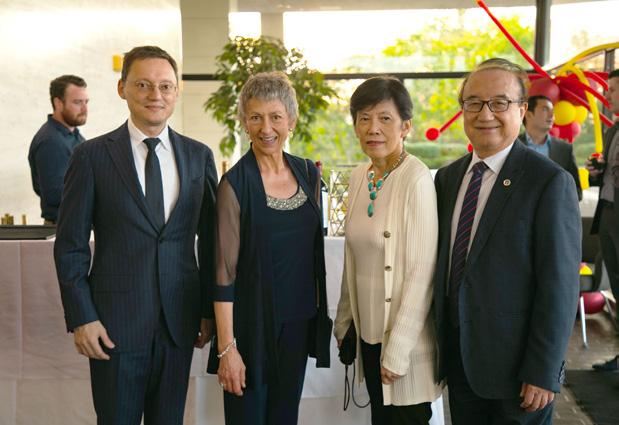

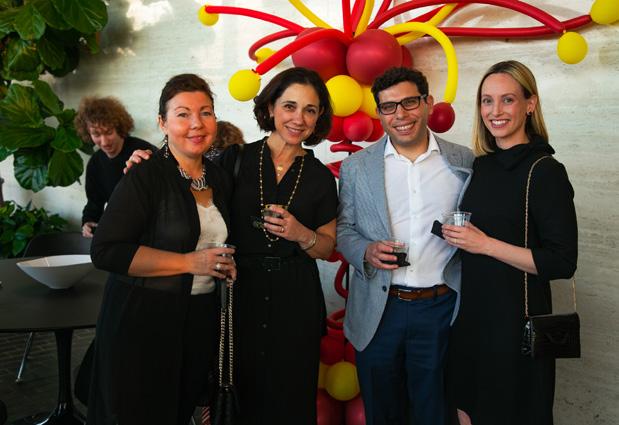
FOR MORE INFORMATION ON HOW TO JOIN OUR PATRONS SOCIETY:
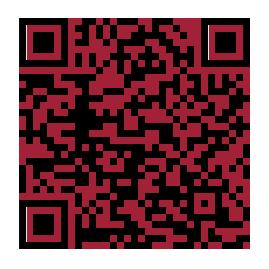 John and Karen Yungmeyer
Brad and Theresa Freilich, Evelina Swartzman, Shane Smeed and Steve Swartzman
Stanislav Ioudenitch, Angela Walker and Edith and Benny Lee
Ronald and Phyllis Nolan and Vince and Julie Clark
Lolita Lisovskaya-Sayevich, Evelina Swartzman and Ihab and Colleen Hassan
John and Karen Yungmeyer
Brad and Theresa Freilich, Evelina Swartzman, Shane Smeed and Steve Swartzman
Stanislav Ioudenitch, Angela Walker and Edith and Benny Lee
Ronald and Phyllis Nolan and Vince and Julie Clark
Lolita Lisovskaya-Sayevich, Evelina Swartzman and Ihab and Colleen Hassan
The Park University International Center for Music Foundation exists to secure philanthropic resources that will provide direct and substantial support to the educational and promotional initiatives of the International Center for Music at Park University. With unwavering commitment, the Foundation endeavors to enhance awareness and broaden audiences across local, national, and international spheres.
Vince Clark, Chair
Steve Karbank, Secretary
Benny Lee, Treasurer
Marilyn Brewster
Lisa Browar
Stan Fisher
Brad Freilich
Holly Nielsen
Ron Nolan
Shane Smeed
John Starr
Steve Swartzman
Guy Townsend
Angela Walker
 Front row, from left – Stanley Fisher, Marilyn Brewster, Benny Lee, Ronald Nolan, Lisa Browar. Back row, from left: John Starr, Steve Swartzman, Vince Clark, Shane Smeed, Bradley Freilich, Guy Townsend, Steve Karbank.
Front row, from left – Stanley Fisher, Marilyn Brewster, Benny Lee, Ronald Nolan, Lisa Browar. Back row, from left: John Starr, Steve Swartzman, Vince Clark, Shane Smeed, Bradley Freilich, Guy Townsend, Steve Karbank.
The Park University International Center for Music’s Patrons Society was founded to help students achieve their dreams of having distinguished professional careers on the concert stage.
Just as our faculty’s coaching is so fundamental to our students’ success, our Patrons’ backing provides direct support for our exceptionally talented students, concert season, outreach programs and our ability to impact the communities we serve through extraordinary musical performances.
We are continually grateful for each and every one of our Patrons Society members. For additional information, please visit ICM.PARK.EDU under “Support Us.”
We gratefully acknowledge these donors as of February 20, 2024. * 2023-2024 Member
Brad and Marilyn Brewster *
Steven Karbank *
Benny and Edith Lee *
Ronald and Phyllis Nolan *
John and Debbie Starr *
Steven and Evelina Swartzman *
Jerry White and Cyprienne Simchowitz *
Richard J. Stern Foundation for the Arts – Commerce Bank, Trustee *
Jeffrey Anthony *
Brad and Theresa Freilich *
Shirley and Barnett C. Helzberg Jr. *
Lockton Companies Inc.
Muriel McBrien Kauffman Family Foundation
Holly Nielsen *
Mark Ptashne and Lucy Gordon
Steinway Piano Gallery of Kansas City *
Gary and Lynette Wages *
Tom and Mary Bet Brown
Vince and Julie Clark *
The DeBruce Foundation
Stanley Fisher and Rita Zhorov *
Edward and Sandra Fried
Mark One Electric Co.
Susan Morgenthaler *
Perspective Architecture & Design, LLC / Matt and Rhonda Masilionis
William and Susie Popplewell
Rex and Lori Sharp
Kay Barnes and Thomas Van Dyke *
Lisa Browar *
Bryan Cave Leighton Paisner
Wm. Robert Bucker
Cluen Family Fund
Mark and Gaye Cohen *
Paul and Bunni Copaken
Suzanne Crandall *
Scott and Claudia Davis
Beverly Lynn Evans
Paul Fingersh and Brenda Althouse
Jack and Pella Fingersh
J. Scott Francis and Susan Gordon
Donald Hall
Doris Hamilton and Myron Sildon *
Colleen and Ihab Hassan *
Lisa Merrill Hickok *
JE Dunn Construction Company
William and Regina Kort *
Dean, ‘53 and Charlotte Larrick
Brian McCallister / McCallister Law Firm
Mira Mdivani / Mdivani Corporate Immigration Law Firm
Jackie and John Middelkamp *
Louise Morden
Kathleen Oldham *
Susan and Charles Porter
Kevin and Jeanette Prenger, ’09 / ECCO Select *
Steve and Karen Rothstein
Stanley and Kathleen Shaffer *
Shane and Angela Smeed *
Straub Construction
Guy Townsend *
John and Angela Walker *
Nicole and Myron Wang *
WSKF Architects





ICM.PARK.EDU.
The Los Angeles Times has reported, “Uzbekistani pianist Behzod Abduraimov is fast becoming one of the finest musicians of his generation.” The 33-year old Park ICM alum will be joined in concert by violinist Daniel Lozakovich. “Daniel is one of the greatest stars of the young generation...Very hot,” said Behzod’s mentor Stanislav Ioudenitch. Together they will perform works by Beethoven, César Franck and the Sonata No. 1 for violin and piano in A minor, Op. 105 by Schumann. Behzod Abduraimov, Piano, Daniel Lozakovich, Violin
APRIL 14, 2024, 7:30 P.M. 1900 BUILDING
GEN ERAL ADMISSION $30. STUDENTS $10 WITH I.D.



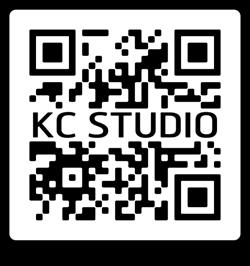





Park University will present its final concert of the 2023-24 season on Friday, April 19th at the charming chapel on campus in Parkville, Missouri. Guest Maestra Yahr has selected a program of works by Jan Sibelius, Karl Stamitz and Felix Mendelssohn.

PARK ICM
ORCHESTRA WITH BARBARA YAHR
CONDUCTING
April 19, 2024, 7:30 p.m.
Graham Tyler
Memorial Chapel
CONCERT IS FREE WITH RESERVATION. SCAN THE CODE TO RSVP.
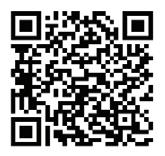
ICM.PARK.EDU.




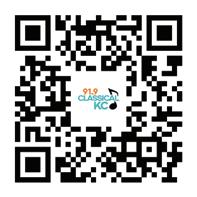

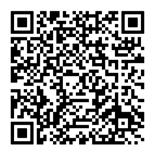
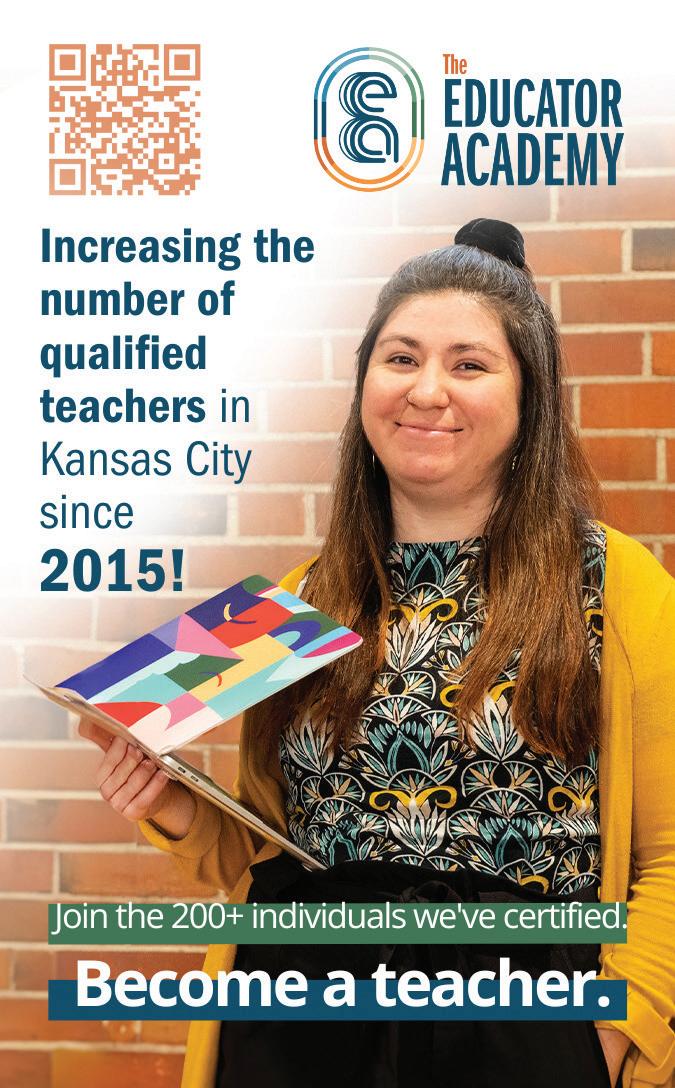
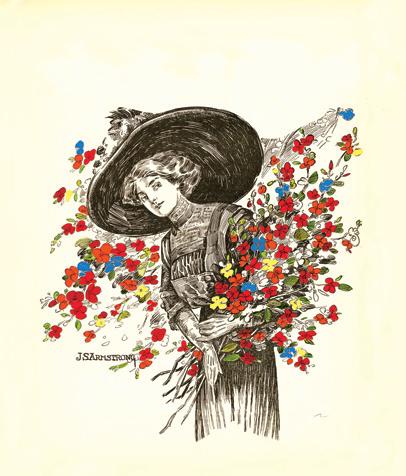

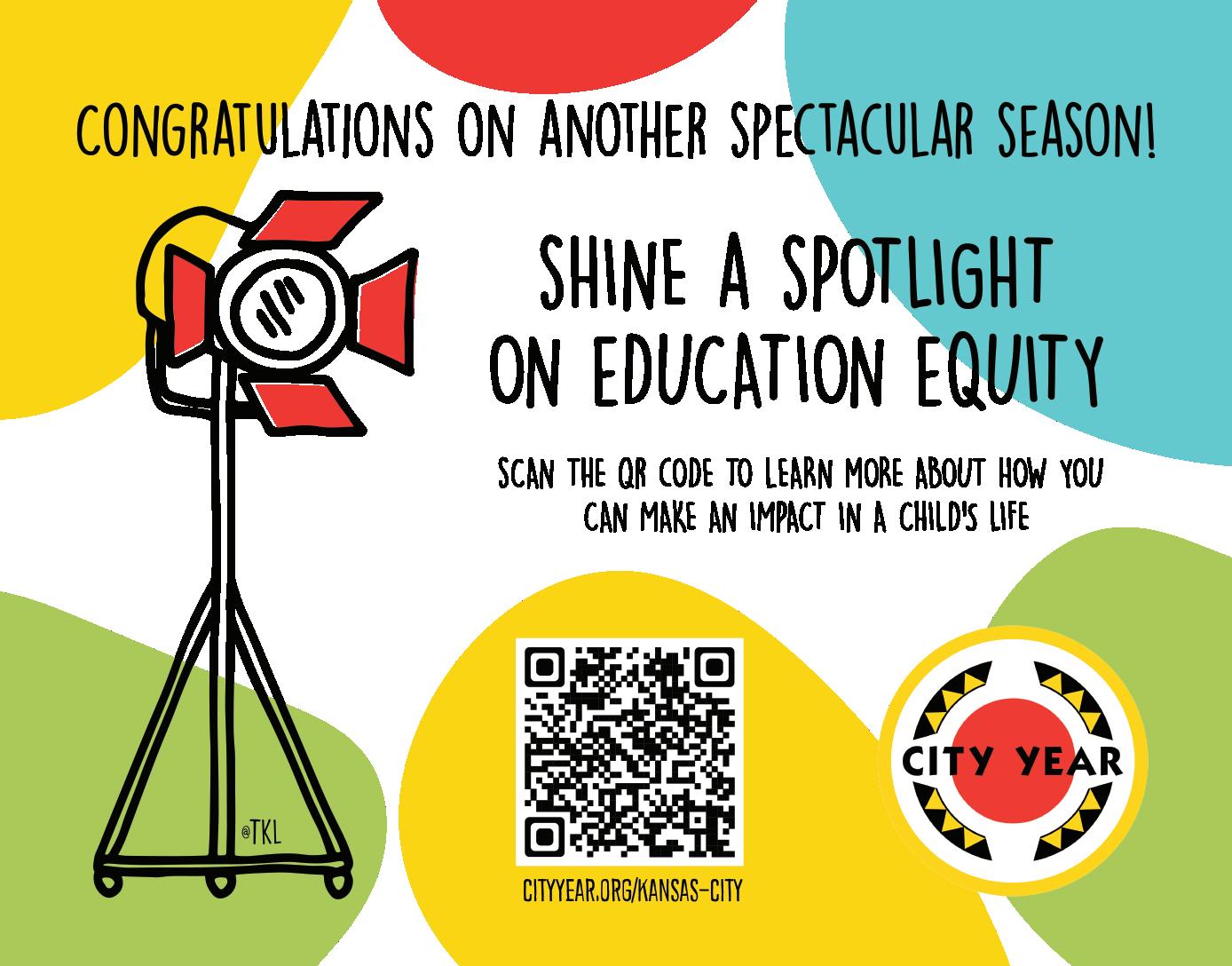




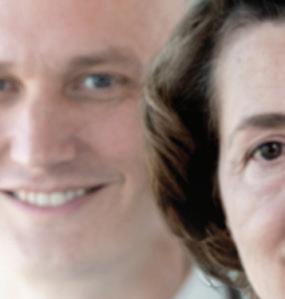










A powerhouse team of 30 nationally renowned experts. Over 115 combined years of proton therapy experience. Billions of cancer cells destroyed. As leaders in our field, we pride ourselves on giving our patients the best possible odds for beating cancer. Because we know what really counts is the number of lives saved.


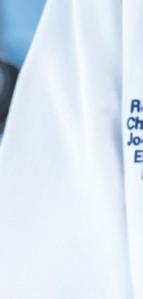

To see if proton therapy is right for you, call 913-588-3671 or visit KUCancerCenter.org/Proton.



